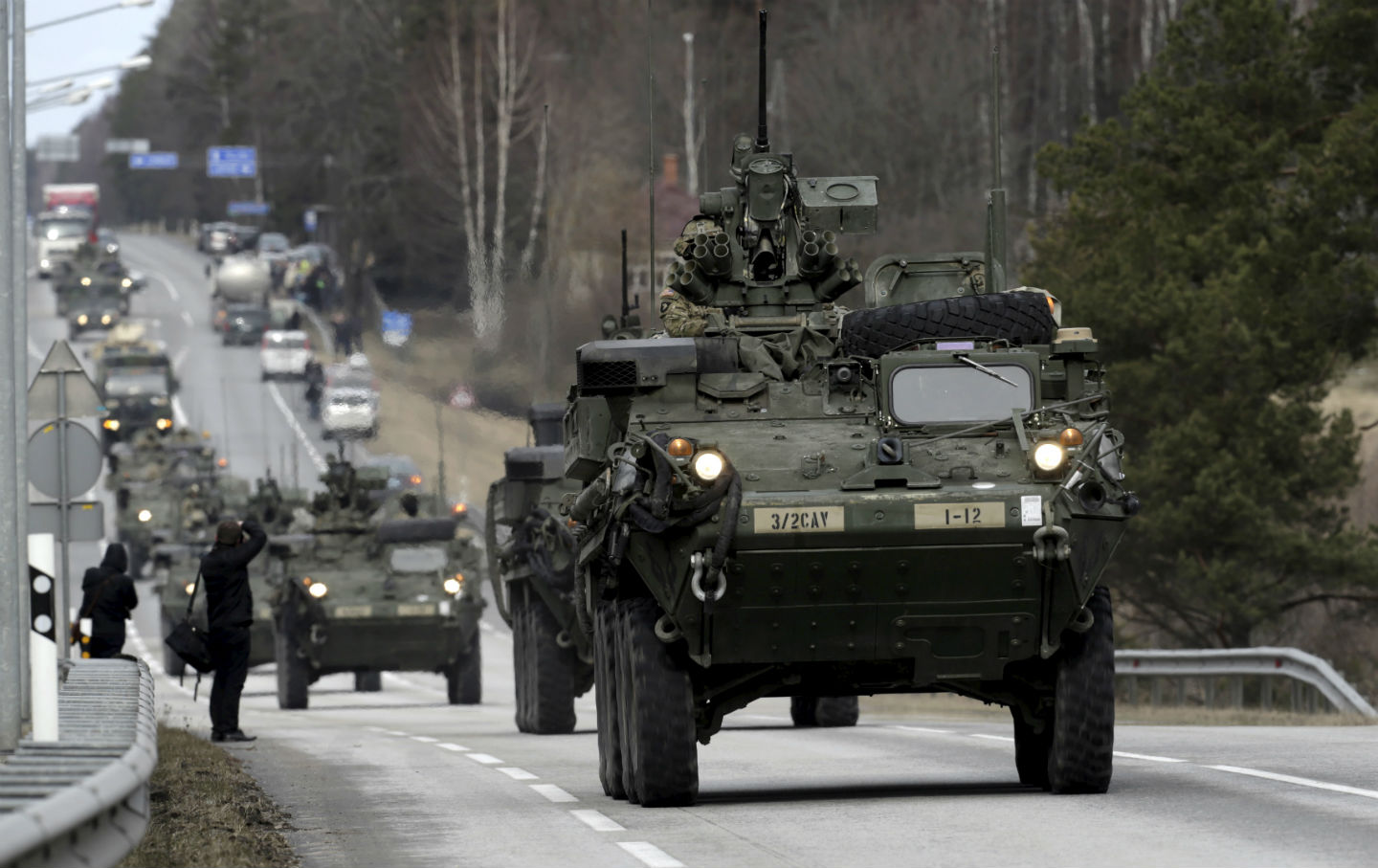For the first time in a quarter-century, the prospect of war—real war, war between the major powers—will be on the agenda of Western leaders when they meet at the NATO Summit in Warsaw, Poland, on July 8 and 9. Dominating the agenda in Warsaw (aside, of course, from the “Brexit” vote in the UK) will be discussion of plans to reinforce NATO’s “eastern flank”—the arc of former Soviet partners stretching from the Baltic states to the Black Sea that are now allied with the West but fear military assault by Moscow. Until recently, the prospect of such an attack was given little credence in strategic circles, but now many in NATO believe a major war is possible and that robust defensive measures are required.

In what is likely to be its most significant move, the Warsaw summit is expected to give formal approval to a plan to deploy four multinational battalions along the eastern flank—one each in Poland, Lithuania, Latvia, and Estonia. Although not deemed sufficient to stop a determined Russian assault, the four battalions would act as a “tripwire,” thrusting soldiers from numerous NATO countries into the line of fire and so ensuring a full-scale, alliance-wide response. This, it is claimed, will deter Russia from undertaking such a move in the first place or ensure its defeat should it be foolhardy enough to start a war.
The United States, of course, is deeply involved in these initiatives. Not only will it supply many of the troops for the four multinational battalions, but it is also taking many steps of its own to bolster NATO’s eastern flank. Spending on the Pentagon’s “European Reassurance Initiative” will quadruple, climbing from $789 million in 2016 to $3.4 billion in 2017. Much of this additional funding will go to the deployment, on a rotating basis, of an additional armored-brigade combat team in northern Europe.
As a further indication of US and NATO determination to prepare for a possible war with Russia, the alliance recently conducted the largest war games in Eastern Europe since the end of the Cold War. Known as Anakonda 2016, the exercise involved some 31,000 troops (about half of them Americans) and thousands of combat vehicles from 24 nations in simulated battle maneuvers across the breadth of Poland. A parallel naval exercise,BALTOPS 16, simulated “high-end maritime warfighting” in the Baltic Sea, including in waters near Kaliningrad, a heavily defended Russian enclave wedged between Poland and Lithuania.
All of this—the aggressive exercises, the NATO buildup, the added US troop deployments—reflects a new and dangerous strategic outlook in Washington. Whereas previously the strategic focus had been on terrorism and counterinsurgency, it has now shifted to conventional warfare among the major powers. “Today’s security environment is dramatically different than the one we’ve been engaged in for the last 25 years,” observed Secretary of Defense Ashton Carter on February 2, when unveiling the Pentagon’s $583 billion budget for fiscal year 2017. Until recently, he explained, American forces had largely been primed to defeat insurgent and irregular forces, such as the Taliban in Afghanistan. Now, however, the Pentagon was being readied for “a return to great-power competition,” including the possibility of all-out combat with “high-end enemies” like Russia and China.
Then there is the matter of self-fulfilling prophecies. By announcing the return of great-power competition and preparing for a war with Russia, the United States and NATO are setting in motion forces that could, in the end, achieve precisely that outcome. This is not to say that Moscow is guiltless regarding the troubled environment along the eastern front, but surely Vladimir Putin has reason to claim that the NATO initiatives pose a substantially heightened threat to Russian security and so justify a corresponding Russian buildup. Any such moves will, of course, invite yet additional NATO deployments, followed by complementary Russian moves, and so on—until we’re right back in a Cold War–like situation.
Finally, there is the risk of accident, miscalculation, and escalation. This arises with particular severity in the case of US/NATO exercises on the edge of Russian territory, especially Kaliningrad. In all such actions, there is a constant danger that one side or the other will overreact to a perceived threat and take steps leading to combat and, conceivably, all-out war. When two Russian fighters flew within 30 feet of a US destroyer sailing in the Baltic Sea this past April, Secretary of State John Kerry told CNN that under US rules of engagement, the planes could have been shot down. Imagine where that could have led. Fortunately, the captain of the destroyer chose to exercise restraint and a serious incident was averted. But as more US and NATO forces are deployed on the edge of Russian territory and both sides engage in provocative military maneuvers, dangerous encounters of this sort are sure to increase in frequency, and the risk of their ending badly will only grow.
Source:
https://www.thenation.com/article/the-united-states-and-nato-are-preparing-for-a-major-war-with-russia/
Post a Comment